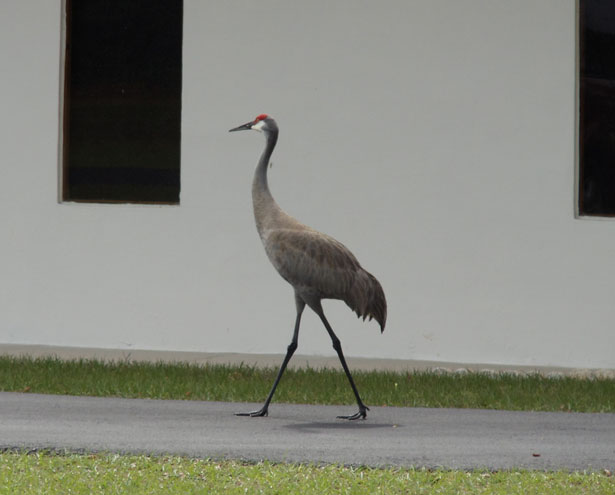
Sandhill crane. Photo by PM Barbour.
Cranes fly with their necks outstretched, otherwise they're quite like herons.
Cranes are great gossips. Some have bare patches of skin on their heads which they inflate or change in colour to show their feelings, and some do the same thing with their head feathers.
Crane calls can be very loud indeed: some can be heard several kilometres away. They can also sing duets of great splendour.
Lastly, famously, and bewitchingly, they dance:
Of course we humans are gossips, too, and there are plenty of stories about cranes. One old Greek story is about a guy called Ibycus who got his revenge on a mugger by asking a flock of cranes to hover over the thief's head until he confessed to the crime.
And on the subject of stories, we mustn't forget Walter Crane, though he wasn't as character in a story but an illustrator of them:

This is from the tales of the Brothers Grimm.
Here's another sort of crane:

Photo by Iwan Gobovitch.
You can see why they have the same name, can't you.
(The bird had the name first.)
You may not be able to sing, dance, lift heavy weights, or persuade muggers to confess, but if you make your neck as long as it will go so you can see something, you're craning it.
I suppose that's something, isn't it.
Word To Use Today: crane. This word comes from the Old English cran, and before that from the Latin grūs and the Greek géranos.
No comments:
Post a Comment
All comments are very welcome, but please make them suitable for The Word Den's family audience.